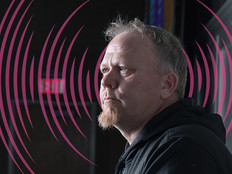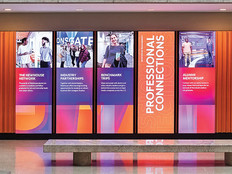5 Google Glass Innovations Happening in Higher Ed
A killer app for Google Glass isn’t waiting in the wings just yet. But given the amount of experimentation with the the technology happening at a number of universities, innovation could be just around the corner.
EdTech: Focus on Higher Education has featured several articles on Google’s wearable technology over the years. Here are just a few of the innovative ways educators have adapted the technology to facilitate learning and open the doors to discovery.
Hands-On, Bite-Sized Education
Andrew Vanden Heuvel, an online instructor based in Michigan, has been revolutionizing education from outside the classroom. Vanden Heuvel initiated a video project called STEMbite, a YouTube channel on which he posts short educational videos filmed with Glass.
The videos are fun, engaging and indicative of his approach to learning. Each video is designed to inspire the viewer to want to learn more, fueling a passion that Vanden Heuvel believes can change more than just education.
“I think it's really hit the right chord because it's a different way to approach teaching,” he says. “So much of what is out there on YouTube and elsewhere is a video of a teacher in front of board. This is a different approach, made possible through Glass."
‘Signglasses’ for the Hearing Impaired
A group at Brigham Young University has been hard at work on Signglasses, a special app that projects American Sign Language narration onto a Google Glass lens during presentations. A demonstration video shows how a deaf student can more easily grasp a lesson in a planetarium while using Glass and Signglasses instead of having to switch her focus in the dark between a narrator and the stars.
The project is being led by BYU Associate Professor Mike Jones and several student researchers — some of whom are hearing impaired, a press release from the university states.
“My favorite part of the project is conducting experiments with deaf children in the planetarium,” student researcher Tyler Foulger, who was born deaf, says in the release. “They get to try on the glasses and watch a movie with an interpreter on the screen of the glasses. They're always thrilled and intrigued with what they've experienced. It makes me feel like what we are doing is worthwhile.”
Abstraction Made Easy
Cecil College CIO Stephen diFilipo has been enthralled with Glass' usage in the classroom. He says the technology could have huge implications on the way we envision math in the real world.
He’s been in touch with a company developing software for the platform similar to those that exist for iPad that enhance students’ understanding of math.
"Imagine you are standing at a pool table, wearing Google Glass. The software could see the felt and the cue ball and help you line up a shot. An image of a line appears on the screen of the Google Glass and changes, depending on where you stand. The software can figure out which shot has the highest probability of being made and how hard to strike the ball. It's the abstraction of geometry, with a functional use in the real world."
Aiding Visual Education
Instructors at Ohio Wesleyan University, including Chris Wolverton of the Botany and Microbiology Department, have been using Google Glass in classroom, lab and field environments.
“One of the struggles of teaching lab techniques is helping students visualize how to do something,” Wolverton said. “I'm eager to use Glass to produce videos that capture a real first-person perspective to working in the lab, so that things seem more familiar when they're actually there doing the experiment.” The university’s admissions office also demonstrates the device informally to prospective students during campus visits. Projects are underway to capture unique experiences in the athletics and advancement divisions, as well.
Relive Vacations Through Glass
Ball State University has been using a mobile app named The Traveler to chronicle the journey of students traveling abroad across five continents. Kyle Parker of BSU's IT Services adapted Traveler for Google Glass after seeing students using the app on their tablets.
While traveling across Europe and North Africa, Parker witnessed students experiencing the world through the frame of the small tablet. Rather than taking in the sights around them, the students were digging through their bags for their tablets, framing the perfect shot and tapping away on the keyboard to record what they saw. Parker wanted to use Glass to have them experience the moment and not be distracted by technology. Glass apps allow students to easily capture photos and annotate them with voice.
Looking for more on Google Glass? Check EdTech: Focus on Higher Ed.








